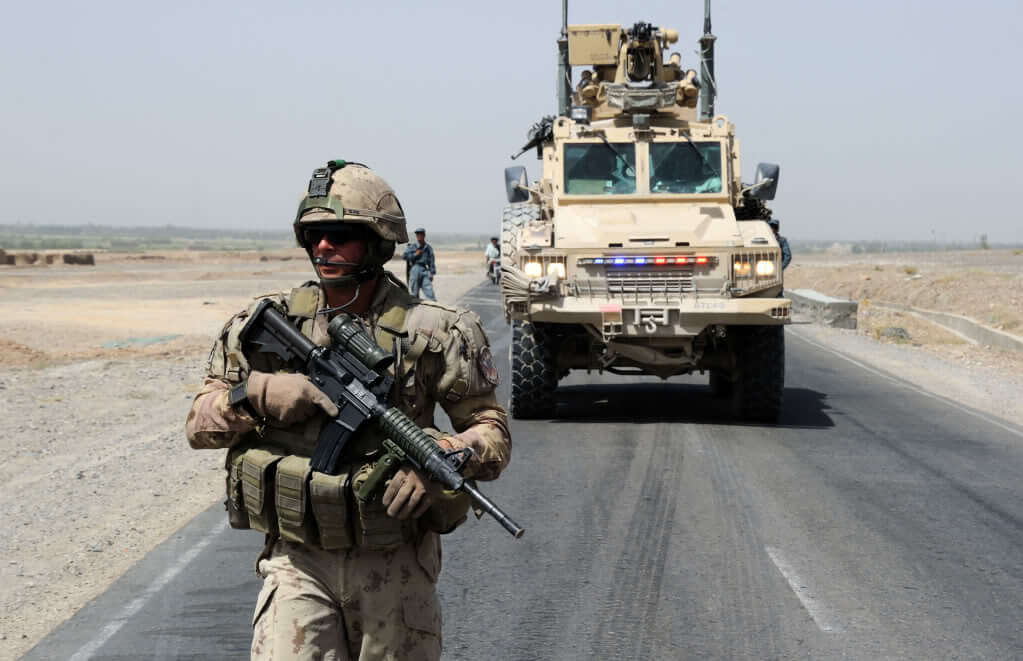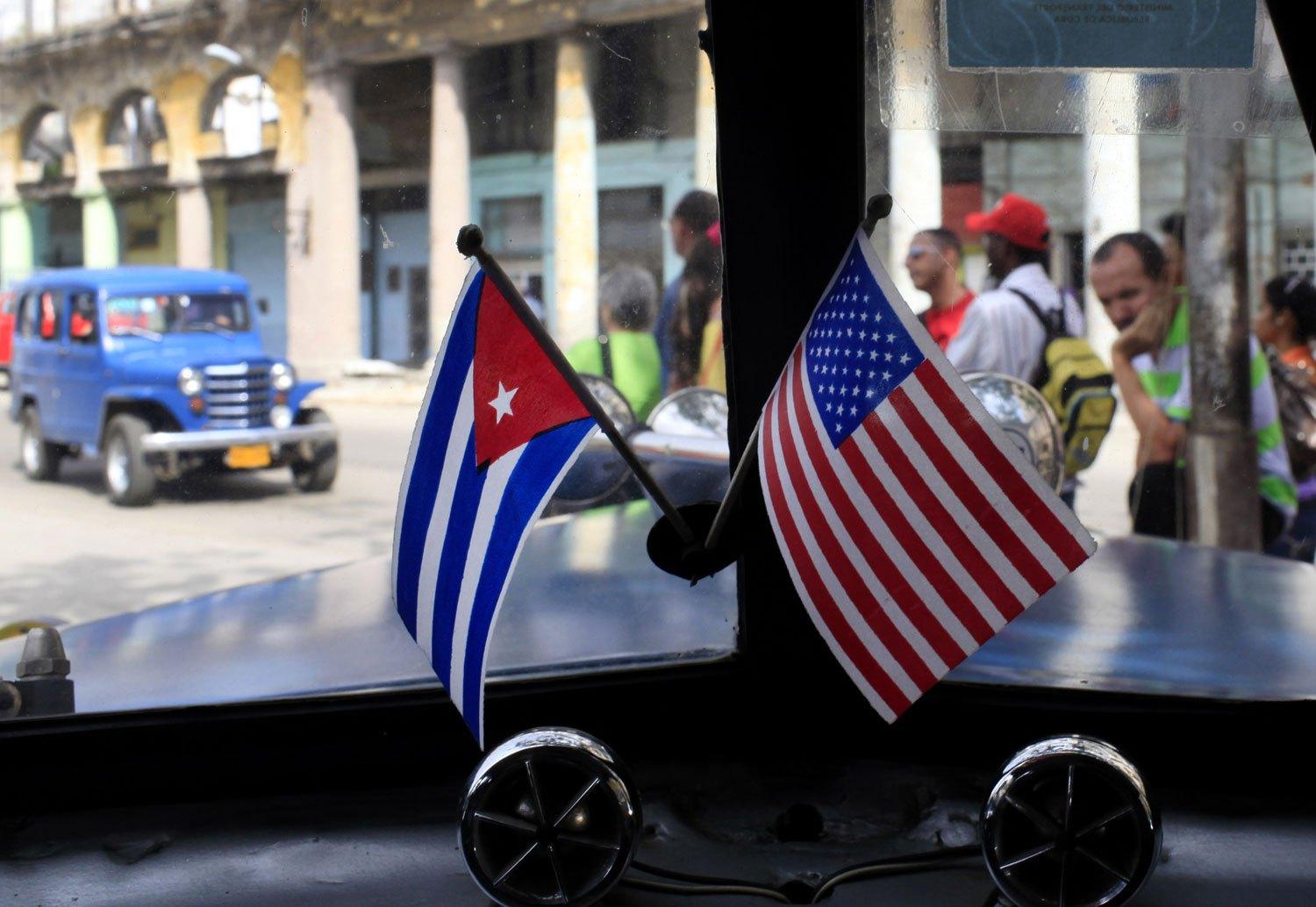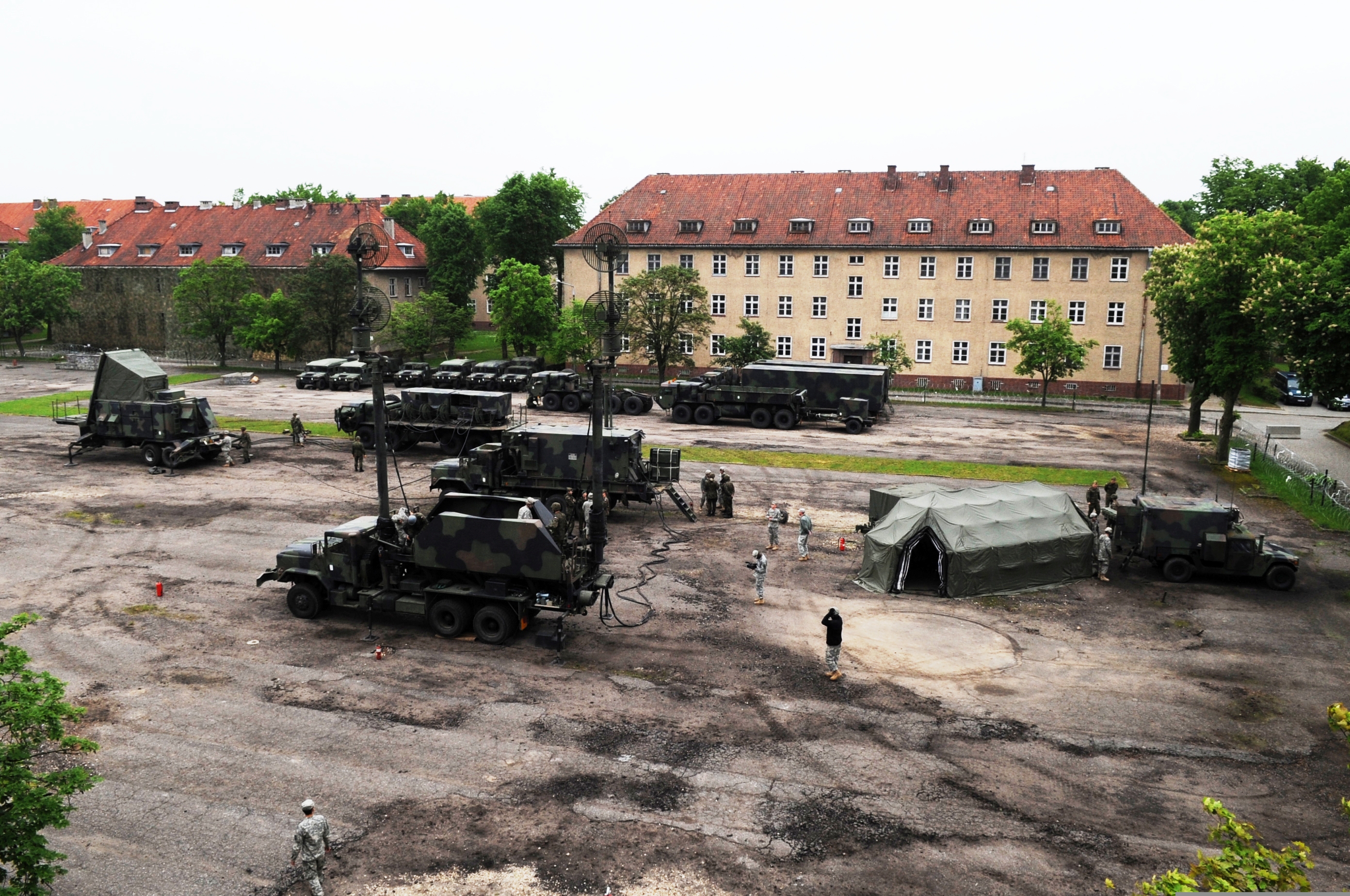On October 5 2018, Sophie Grégoire Trudeau, the wife of the Canadian Prime Minister, appeared at Irving Shipyard in Halifax, Nova Scotia, to oversee the official naming ceremony for Canada’s lead Arctic and Offshore Patrol Ship (AOPS), HMCS Harry DeWolf. The name honours Vice-Admiral Harry DeWolf, a Canadian war hero from the Second World War.
The vessel is the first of at least five ships to be constructed under the Arctic and Offshore Patrol Ship program, part of Canada’s wider National Shipbuilding Procurement Strategy. The ships will be used to patrol and survey Canadian waters, particularly the Arctic, but can also be used for disaster response and research.
This significant milestone provides an opportunity to trace the history of the AOPS program and to consider how the program aligns with Canada’s defence priorities.
AOPS Program
Construction of the Harry DeWolf began in September 2015, and the vessel was launched in September 2018. At a length of 103 metres and a weight of 6,615 tonnes, it will be the first large ship to enter the services of the Canadian Navy in 20 years. HMCS Harry DeWolf is scheduled for delivery to the Royal Canadian Navy (RCN) in the summer of 2019.
Construction of the second and third vessels, to be named HMCS Margaret Brooke and HMCS Max Bernays, is underway and construction of a fourth vessel, HMCS William Hall, will begin later in the year.
The ships are expected to operate year-round in medium first year ice (70-120 cm thick) as well as the open ocean areas in the Atlantic and Pacific Canadian Exclusive Economic Zone. The ships will possess icebreaking capability exclusively for their own mobility but are not expected to provide icebreaking services to other vessels. The AOPS will operate at a range of at least 6,800 nautical miles at 14 knots and will maintain a cruise speed of at least 14 knots and a maximum speed of at least 17 knots.
The 6,800 nautical-mile range of the AOPS to operate in the Arctic will be extended by the refuelling station at Nanisivik naval facility, currently under construction near Arctic Bay, Nunavut. The facility is expected to become fully operational by the fall of 2018. Presumably, the ships will be utilised to patrol the length of the Northwest Passage during the four-month summer shipping season and guard the approaches to the Passage year-round. Other patrol areas will be determined by the needs of the RCN and the specific mission at hand.
The Harry DeWolf-class ships will be armed with a single MK38 25mm machine gun designed by BAE Systems. The MK38 is intended to provide close-range shipboard defence against small, fast, and agile surface threats, such as small speed boats and similarly sized vessels. It is noteworthy that the AOPS ships are unusually lightly-armed when compared to similarly sized naval and coast guard patrol vessels employed by Canada’s Arctic NATO allies. Denmark, for example, has procured three Knud Rasmussen Ocean Patrol Vessels, which each carry significantly more firepower than the Harry DeWolf-class AOPS.
A “Titanic Blunder?”
The procurement process has not been without controversy. Concerns over the cost of the ships were reported by the media when the contract was signed, and there have since been delays in construction and a rising price tag attached to the project. Others, such as Arctic expert Rob Huebert, have criticised the AOPS for their relative lack of armaments. The proposed AOPS have at different moments been referred to as “Frankenboats” and “slush-breakers”.
The most scathing indictment of the AOPS procurement process has come from the academics Michael Byers and Stewart Webb, who have referred to the process as a “titanic blunder”. According to Byers and Webb, the proposed AOPS are too expensive, too limited in range, too slow for effective patrol duties, and lacking in sufficient icebreaking capability. The authors conclude that the AOPS is a compromise solution which is inadequate for both Arctic operations and maritime patrol duties.
Canada’s Defence Priorities in the Arctic
In evaluating the AOPS procurement process, it is worth first considering the aims and needs of the Canadian military in the Arctic.
Canada’s 2017 defence policy, Strong Secure Engaged, states that the AOPS will be expected to provide the Canadian military with enhanced situational awareness of activities and developments in the Arctic region. The ships will provide the RCN with the response and support capability to aid other government agencies and those engaging in commercial activity in the Arctic. They will also help Canada assert and enforce its sovereignty in the High North, a longstanding Canadian defence priority.
The Royal Canadian Navy has stated that the ships are not designed for naval warfare with Russia nor are they intended to be used tactically for this function. In 2014, then Commander of the Royal Canadian Navy, Admiral Mark Norman, outlined the intended function and purpose of the ships, noting that the AOPS will provide a “naval presence” in the “largest maritime space in Canada.” This essentially constabulary function of the AOPS means the ships will, in the words of Robert Smol, act as “floating security guards” in the Arctic.
The prospect that Russia, which has invested heavily in nuclear icebreakers capable of year-round deployment, might challenge Canada’s claim over the Northwest Passage through some kind of “freedom of navigation” exercise is unlikely. Russia bases its claim to the Northern Sea Route on similar grounds as Canada’s, so any challenge to Canada’s position runs counter to Russian interests.
One criticism is that the AOPS are too lightly equipped, particularly in relation to their Scandinavian counterparts, which boast superior firepower. In a 2018 policy paper on the AOPS, Arctic expert Adam Lajeunesse notes that there is no realistic probability of the RCN engaging in “high-intensity kinetic operations” in the Arctic. The Norwegians and the Danish, on the other hand, require enhanced combat and operational capabilities in the High North, given the hypothetical scenario of naval conflict with Russia in the Baltic, Barents, or Norwegian seas. The current security threats facing Canada’s Arctic are expected to be unconventional and do not require warships to address them.
Another common criticism levelled at the AOPS is that they will not be able to operate in harsh wintertime Arctic conditions. But as Lajeunesse describes, the AOPS will “only need to be able to operate in the North when other ships are there, too”. These “other ships” – commercial, tourism, and research vessels – will comprise much of the traffic in the area and are unlikely to be operating in the Canadian Arctic when the sea is covered by ice.
Mainstream criticisms of the AOPS are valid. The procurement process has been decidedly expensive and lengthy. The AOPS are certainly not icebreakers, nor are they warships. Regardless, considering the relatively modest aims of the RCN in the High North, the ships appear poised to deliver on the basic needs of the Canadian military to monitor developments in the Arctic and respond to unconventional security incidents accordingly.
Featured Image: HMCS Harry Dewolf, lead vessel in class, under construction in the Halifax Shipyard | May 6th, 2018 (Photo from Wikimedia Commons) – https://commons.wikimedia.org/wiki/File:HMCS_Harry_Dewolf_under_construction_May_2018.jpg
Disclaimer: Any views or opinions expressed in articles are solely those of the authors and do not necessarily represent the views of the NATO Association of Canada.




